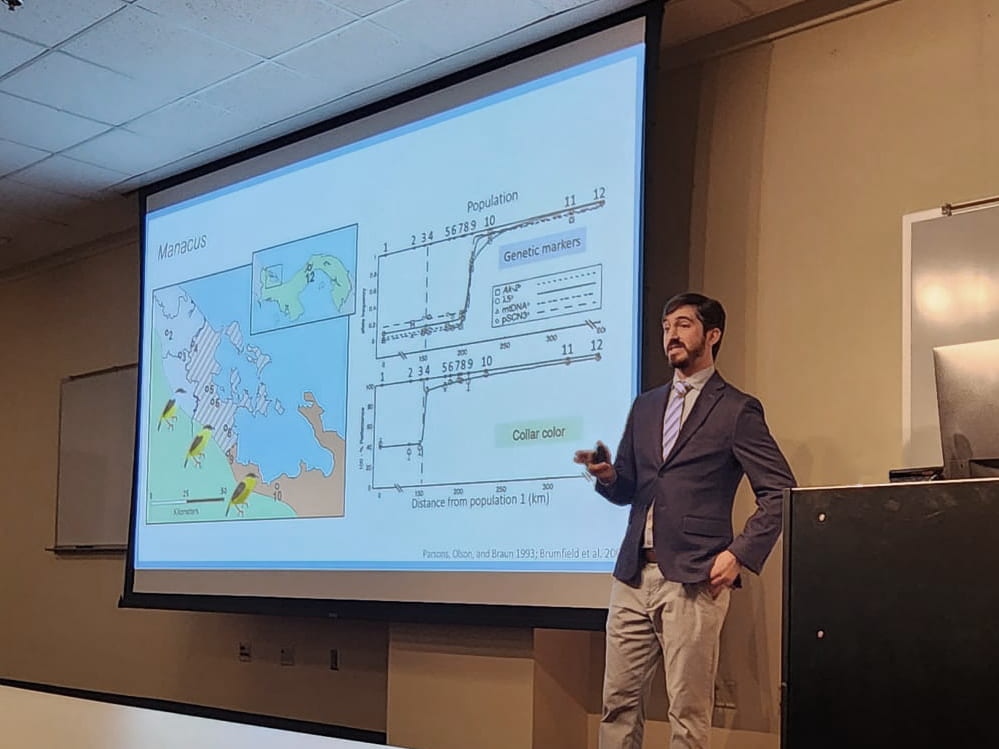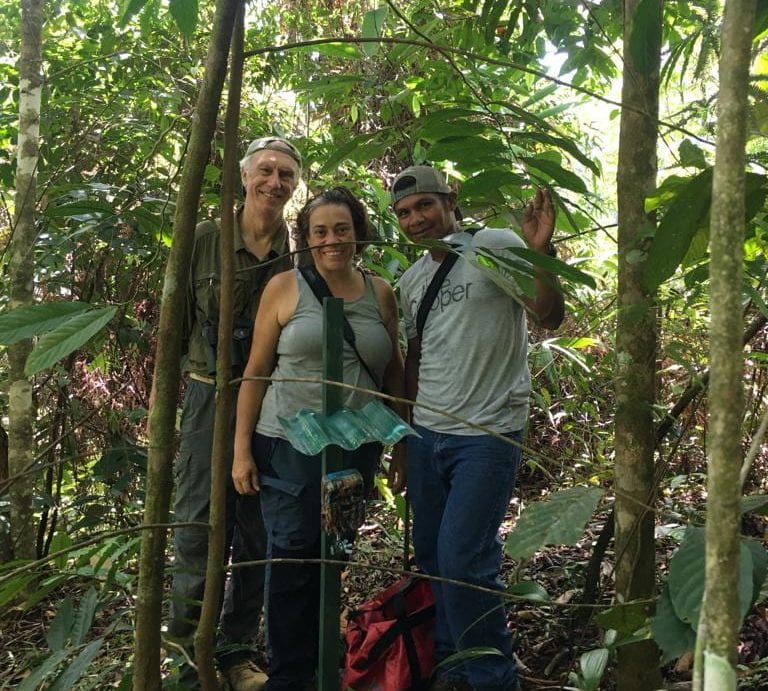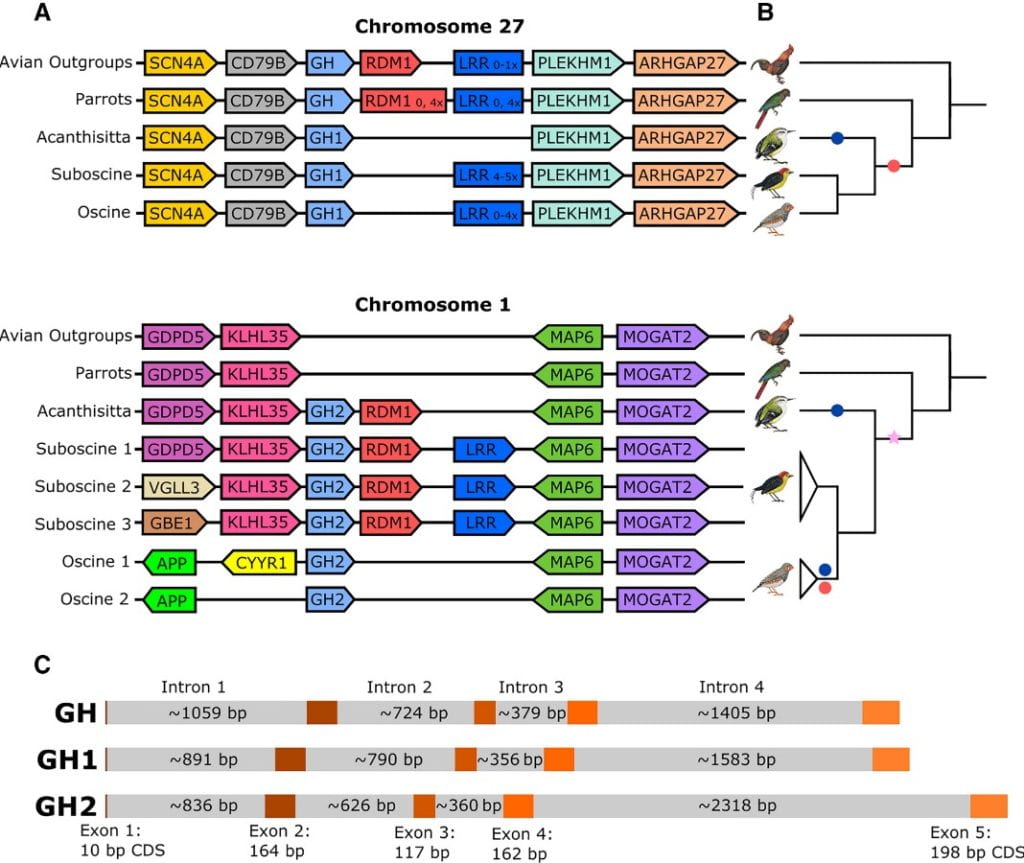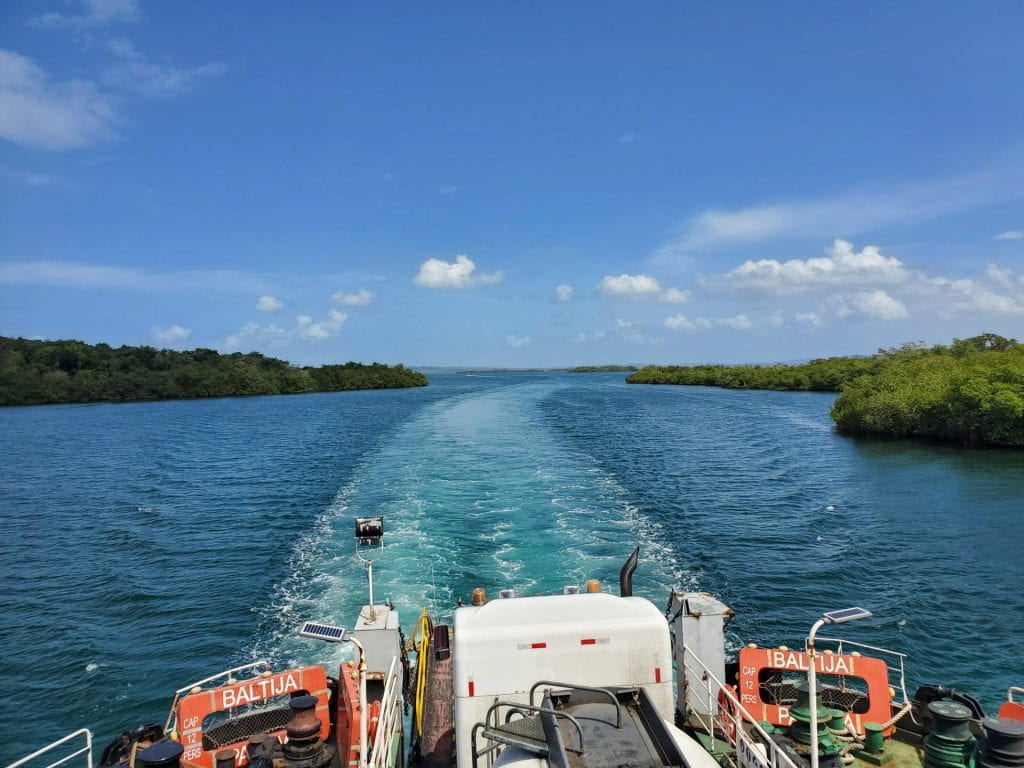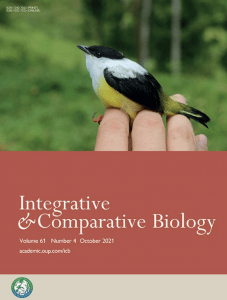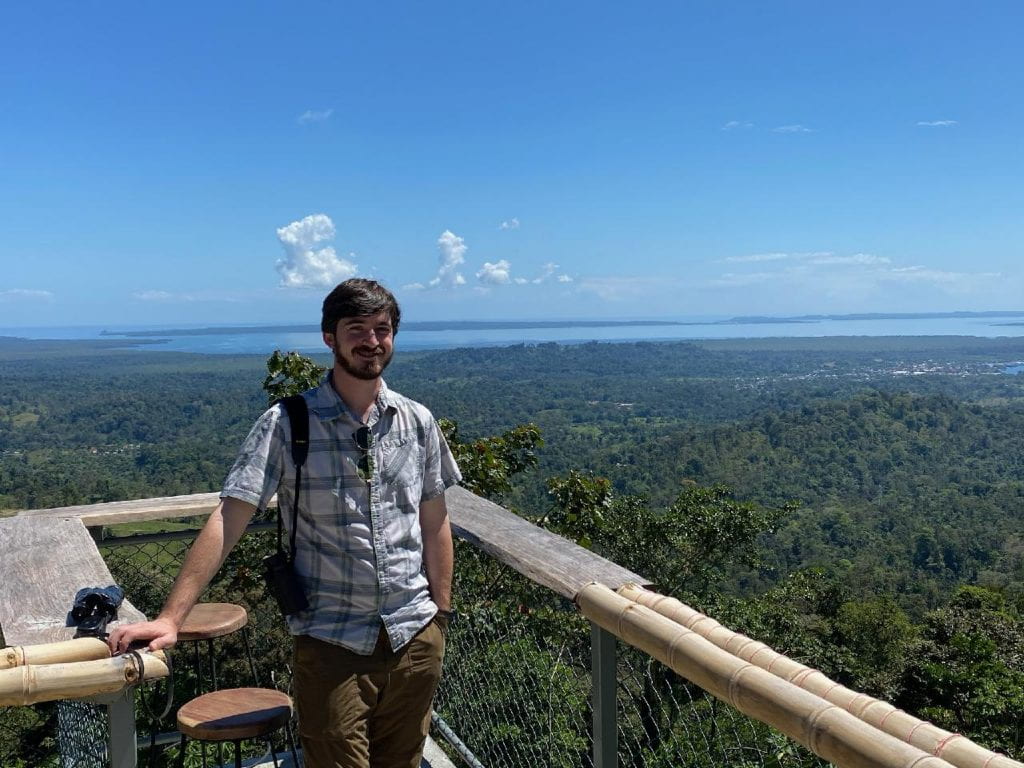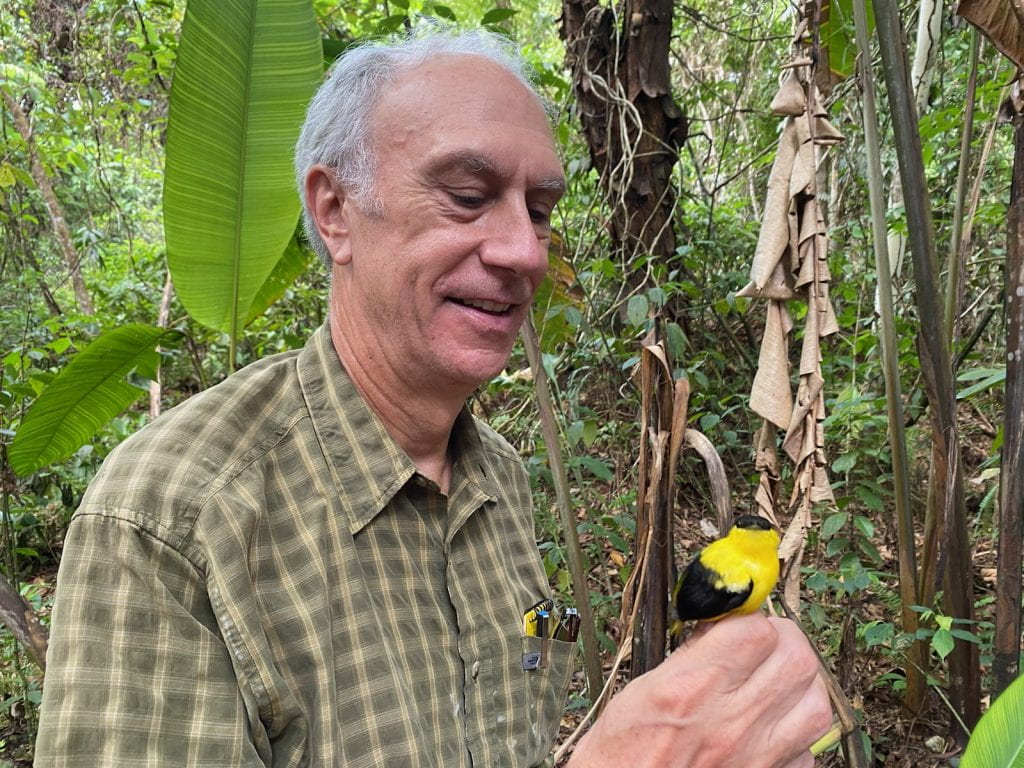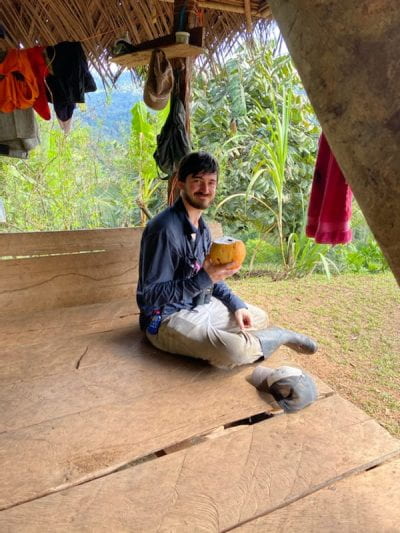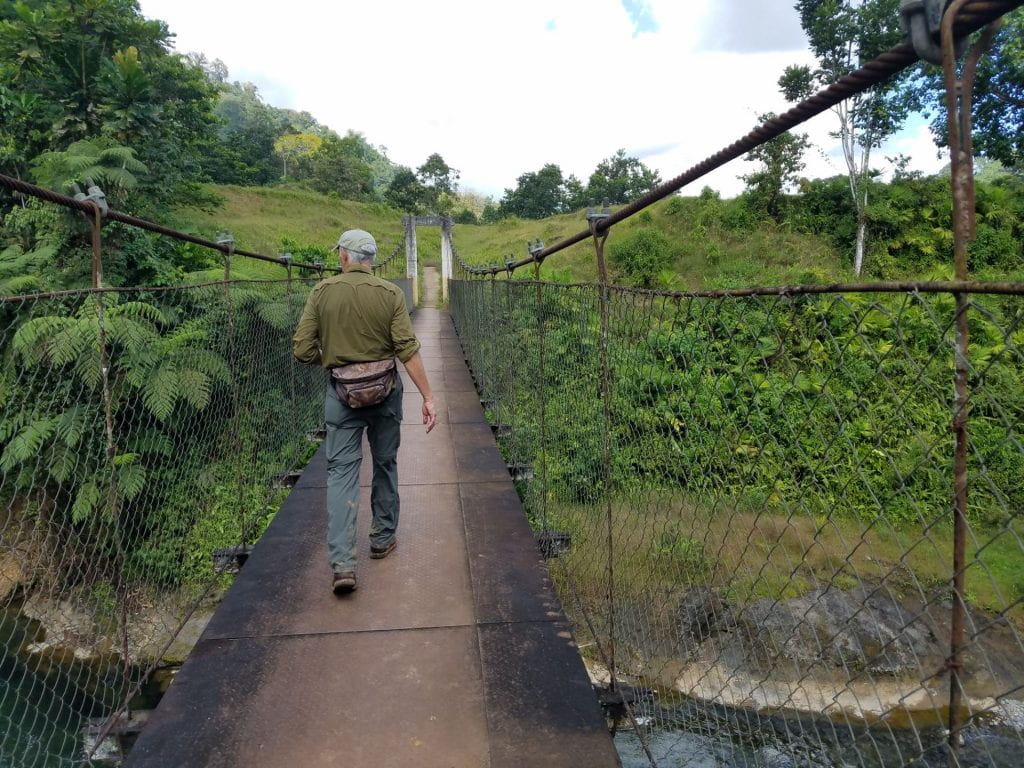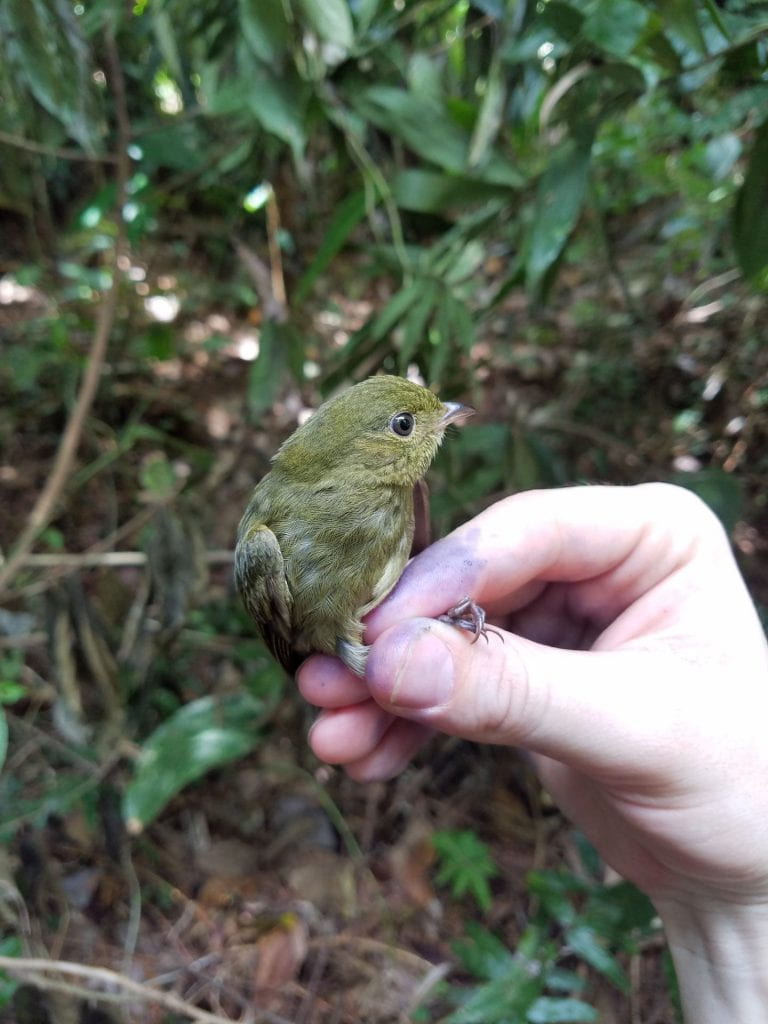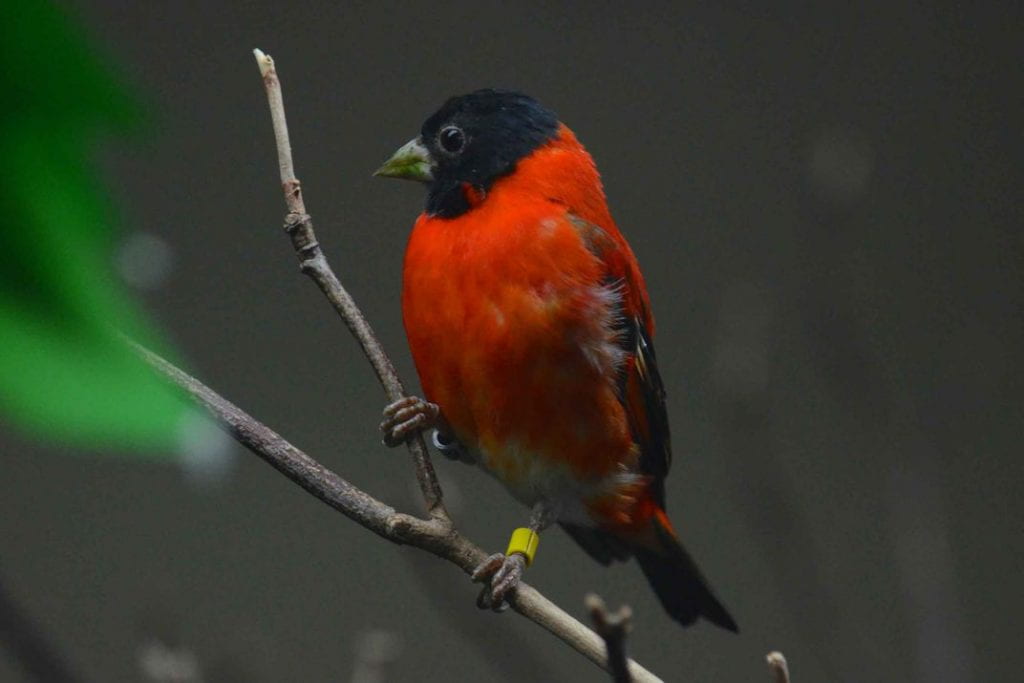Last month, the Braun Lab celebrated the completion of Kevin Bennett’s PhD and successful defense. Kevin is moving on to his postdoc at Penn State studying warbler phylogenomics with David Toews. He will stay in the DC area, however, and work remotely at PSU. Congratulations, Kevin!
Another field season in Panama ends
This year Mike and former postdoc Tom Parsons returned to Panama for more manakin genetic sampling and behavioral data collection, both on islands in the Bocas del Toro archipelago and on the mainland. The team this year included longtime field assistant Adolfo and local friends/naturalists Natalia and Ramon.
Mike, Natalia, and Adolfo, show off a new camera setup: rain-protected and on a stake.
Mike sets off on horseback to locate the hybrid zone between golden-headed and red-capped manakins in the Darien.
New paper from Shauna, Peri, and Mike
Shauna’s first PhD chapter has been published in Genome Biology and Evolution! Link here. Co-authors include Peri and Mike, along with collaborators Qi Fang and Philip Johnson.
Leveraging data from 342 avian genomes, they examined the evolution of avian growth hormone (GH) genes. GH was duplicated in the passerine lineage, and both passerine GH genes maintain functional features and are expressed in different tissues. Compared to the non-passerine single-copy GH, passerine GHs show evidence of positive selection, and Shauna + coauthors identified mutations likely to affect function. As passerine GH is the most widely-found gene originating in the common ancestor of passerines, studying its evolution clarifies potentially adaptive genetic features shared by the ultra-diverse passerine birds.
Recent lab news
The Braun Lab has been pushing forward and projects and papers in the last year, plus doing some exciting traveling. Here is a quick summary of what we’ve been up to:
- In the spring of 2022, Mike traveled to Panama for another field season studying hybrid manakins. This year, he was joined by Peri, Kevin, and recently retired former postdoc Tom Parsons, who helped develop the Manacus hybrid zone system in the early ’90s. This year the team focused on the islands of the Bocas del Toro archipelago.
- In the summer, Kevin and Mike gave talks on manakins and Red Siskins, respectively, at the AOS meeting in San Juan, Puerto Rico.
- In January of 2023, Kevin and Mike traveled to Ecuador to further a collaboration with Dr. Jordan Karubian from Tulane University (lab website here) and PhD student Luke Anderson. Luke will soon be joining us in DC for a semester to tackle a large manakin sequencing project.
- Shauna had her first PhD chapter accepted! More on that soon in the next post.
Heading back to the mainland from Isla Colon in western Panama. We’ll be back in 2023!
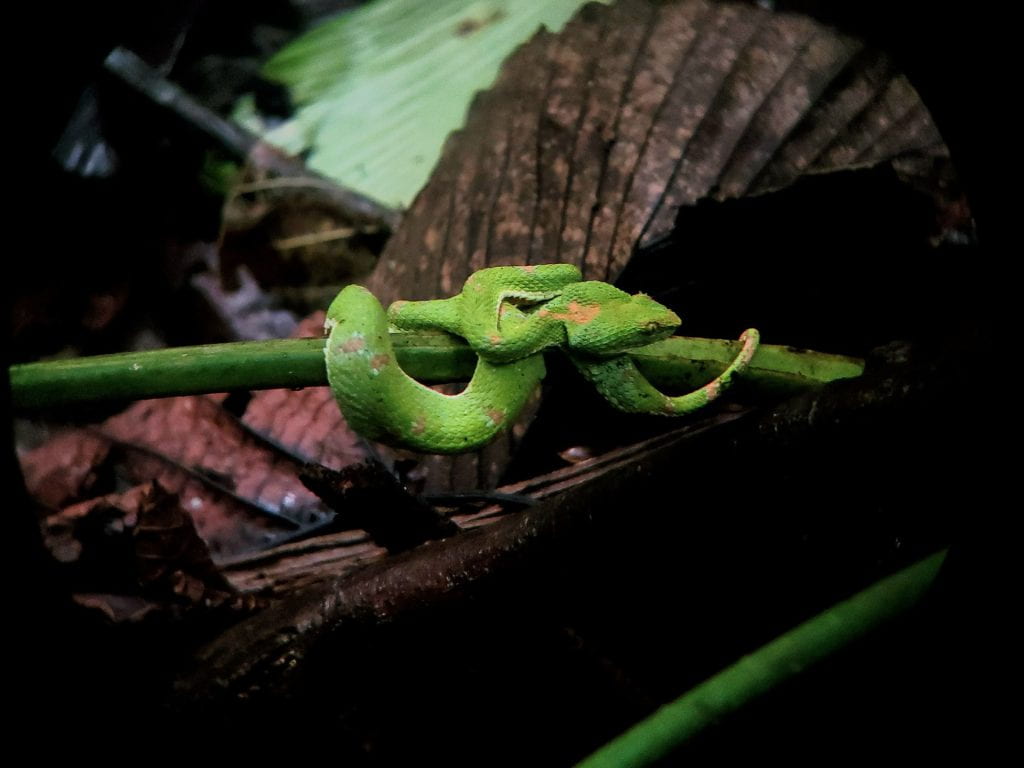 An eyelash viper from western Ecuador
An eyelash viper from western Ecuador
New review paper from Kevin, H.C., and Mike
As part of the Manakin Genomics Research Coordination Network’s symposium at this year’s SICB meeting, Kevin, Mike, and former Braun lab postdoc H.C. Lim wrote a review of the Manacus system in Panama, including its contributions to our understanding of sexual selection and hybridization and the promise it holds for future evolution research. Take a look in the latest issue of Integrative and Comparative Biology or at the link here.
363 Bird Genomes
In November, a group of scientists published the fruits of a large undertaking: sequences of 363 bird genomes, including 267 brand new and representing over 90% of all bird families were published alongside this paper in Nature.
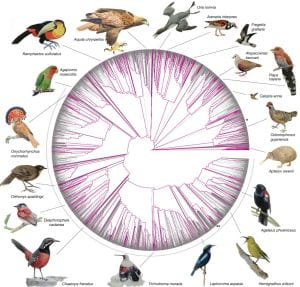 Dr. Braun was among the co-authors of the study (as were former lab members Robb Brumfield and H.C. Lim) and was interviewed for several of the popular media pieces that covered the release, like the BBC and Science News. You can also watch this short video for some highlights.
Dr. Braun was among the co-authors of the study (as were former lab members Robb Brumfield and H.C. Lim) and was interviewed for several of the popular media pieces that covered the release, like the BBC and Science News. You can also watch this short video for some highlights.
And don’t miss this slightly longer piece from the Smithsonian Voices blog.
Birds of Guyana webinar
Dr. Braun gave a webinar in August which provided an overview of his conservation work in Guyana, including details on birds in Guyana. If you’re interested in the Red Siskin Initiative, conservation in general, or birding in Guyana, take a look!
New paper from Dr. Braun and lab alumnus H.C. Lim
New work from the postdoctoral work of of Dr. H.C. Lim, formerly of the Braun Lab and now an Assistant Professor at George Mason University, has come out in Ecology and Evolution. In it, H.C., Mike, and coauthors examine genetic divergence of five bird clades across Southeast Asia. Check it out here.
Kevin and Mike return from Panama
In February, PhD student Kevin Bennett headed down to Panama with Dr. Braun to get set up for a 3+ month field season studying how light and color impact sexual selection in manakins. Because of the COVID pandemic, however, they returned to D.C. last month with data from an abbreviated season. Science happens in the real world, and sometimes that means putting it on hold for the sake of safety. Kevin will be back again next spring, undeterred.
Before he left Panama, Kevin’s motion-sensor camera traps recorded manakin behavior and incidentally captured other species as well. Below are some videos and photos from the season.
A manakin display, male and female. Males make the snapping sound by smashing their wings together.
A male clearing his display court.
Camera “bycatch.” Olive-backed Quail-doves.
Jaguarundi, a native cat species.
Tamandua, a species of anteater.
Northern naked-tailed armadillo. This species is listed as Data Deficient by the IUCN.
Red Siskin trade and social networks
Endangered Red Siskins are still trafficked in their native Venezuela and here in the United States. They are kept as pets and cross-bred to make red canaries. Dr. Braun and colleagues in the Red Siskin Initiative are working to understand how trading in Red Siskins works, how to raise the birds in captivity, and ultimately how to reintroduce and protect the birds in the wild.
Yesterday, Smithsonian Magazine published a story that describes some recent work by Dr. Braun, lab alumnus Dr. Brian Coyle, and colleagues in the RSI who analyzed social networks in the Venezuelan pet trade to better understand challenges facing Red Siskin conservation. It also expands on the current state of the RSI.
Read the article here.
Read the social network study, which was published in Animal Conservation, here.

